The Elbe Cycle Route - Elberadweg - is one of Europe's most famous river rides - and it really deserves that title. It's easy to follow, mostly flat and full of interesting places to see. But what stood out most to us between Dresden and Magdeburg was how often the atmosphere changed. One moment we were riding past elegant buildings, the next through open fields, forests or quiet villages. The river is always nearby, but it doesn't try to steal the show - it just gently leads the way. This part of the route felt like a perfect example of how well Germany does cycling: it's varied, welcoming and thoughtfully planned. Whether you've done long tours before or this is your first time, following a river like the Elbe is a great way to enjoy the journey - especially one that never feels the same for long.
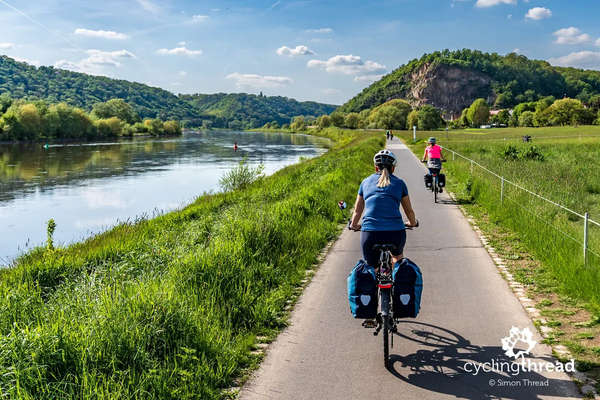
Dresden is a beautiful place to start a cycling trip. The route runs right through the city, along the river and then out into greener spaces. Sometimes you're close to the water, sometimes a bit further away, but the river is always there. It's hard to ride fast around Dresden - there's too much to see. Not far from the city you'll find Radebeul, where fans of adventure stories can visit the Karl May Museum. Just a short ride away is Altkötzschenbroda, a peaceful, creative old village. And nearby, Wackerbarth Palace welcomes visitors with vineyards and a working winery. Dresden isn't just a starting point - it's a place worth staying an extra day to explore.
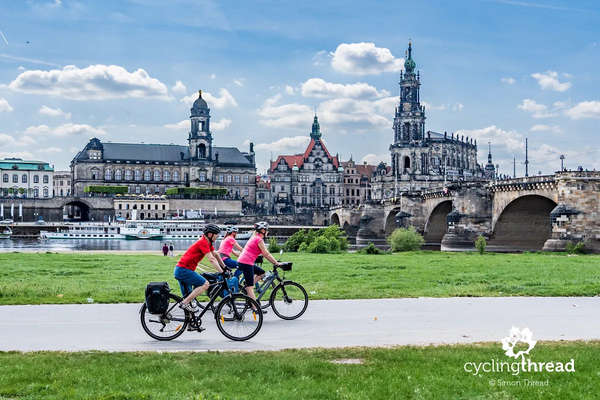
Between Dresden and Magdeburg, the route is full of variety. You'll ride on smooth asphalt most of the time, but there are also short stretches of cobblestones, gravel or older concrete. Sometimes you cycle along raised dikes, sometimes through quiet woods or over open farmland. Village centers might slow you down with bumpy stones and riverside paths can change surface without warning. But that's part of the fun - it keeps the ride interesting. It's not about going fast. It's about taking in the changes, enjoying the rhythm and being surprised. A bike with slightly wider tires helps, but you don't need anything special to enjoy it.
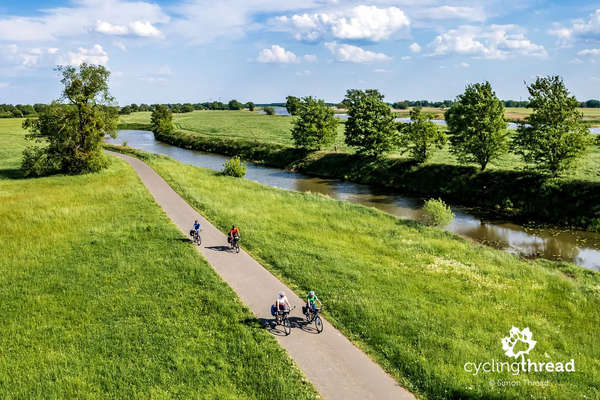
Wittenberg sits about halfway between Dresden and Magdeburg, and it feels like a natural place to stop. It's where Martin Luther began the Reformation by posting his 95 Theses on the church door. Even if you're not into history, the town has a special atmosphere. The route brings you straight to the old town, which is small, walkable and full of charm. We spent the night at the Cranach-Herberge and explored the cobbled streets in the evening, after most visitors had gone. It was peaceful, quiet - and powerful in a quiet way. Wittenberg isn't just pretty - it means something.
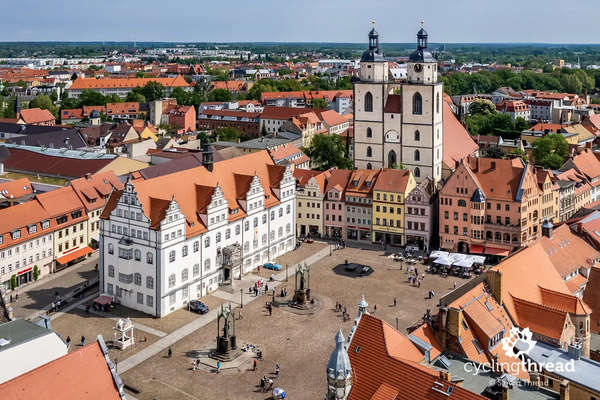
One nice thing about this route is how often it crosses from one side of the Elbe to the other. Sometimes you take a big bridge, sometimes a small local ferry. These crossings give the ride a pleasant break and a chance to enjoy the view. On our ride, we changed sides often - sometimes by choice, sometimes because the route suggested it. The ferries were a highlight. They're simple, quiet and local - and they let you slow down for a moment and chat with other cyclists. Each crossing adds something small, but special, to the journey.
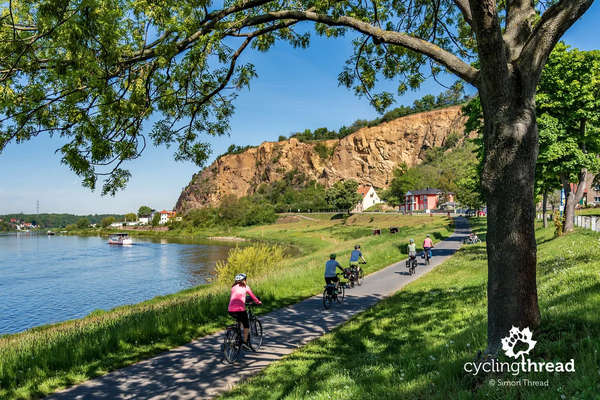
Arriving in Magdeburg feels like reaching a quiet but spacious end to the trip. The route takes you into the city through green parks and along the riverside, so you don't feel the usual rush of traffic. Magdeburg doesn't have the grand look of Dresden, but it has its own kind of character - modern, open and honest. It's a big enough place to find anything you need as a cyclist and still close to the water. After a few days of varied riding, Magdeburg gives you space to reflect - and a satisfying contrast to where the journey began.
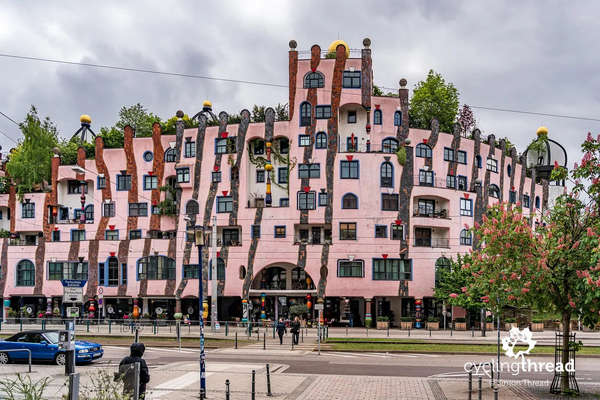
One of the best things about this route is how well it's connected by train. Towns like Dresden, Riesa, Wittenberg, Dessau and Magdeburg all have train stations and many trains take bikes. That means you don't have to cycle the whole route if you don't want to. You can skip a section, go back by train, or take a shortcut if the weather turns bad. It makes the route more flexible - and more relaxing. If you like to travel by train with bicycle, this is one of the easiest parts of Germany to do just that. Even if you don't end up using the trains, it's nice to know they're there if you need them.
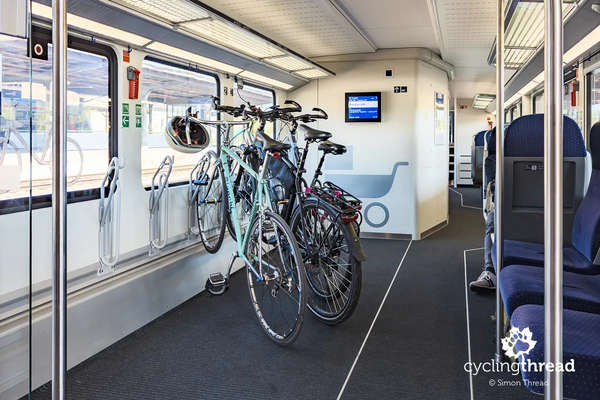
Germany's Bett+Bike program is a great example of how to take care of bike travelers. On this section of the Elbe Route, we stayed at two certified Bett+Bike hotels. In Wittenberg, the Cranach-Herberge had a secure bike room and a cozy feel, right next to the old town square. In Magdeburg, Sleep&Go offered a spacious basement for bikes, with racks on the walls and chargers for e-bikes. These places weren't just bike-friendly - they really understood what cyclists need after a long day on the road. And that made a difference.
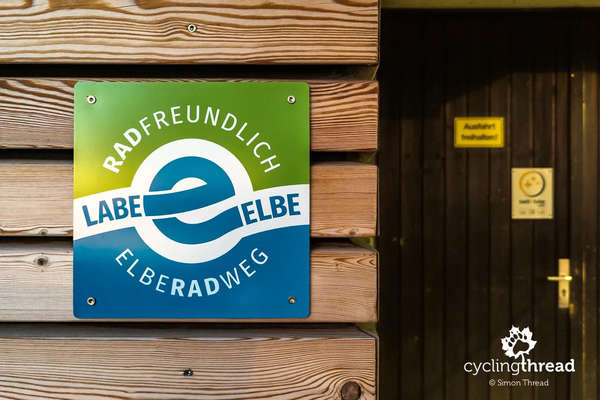
Looking back at our ride from Dresden to Magdeburg, we didn't just remember the towns and the distances - we remembered the feeling. The Elbe Cycle Route doesn't try to impress with big gestures. Instead, it lets you notice small things: a quiet road through the floodplain, the way the light changes over the fields, or the wind in the trees. Those moments stay with you. And even days later, we weren't thinking about the kilometers - we were thinking about the calm, steady rhythm of the river. It's that kind of ride.
Check out our entire report from the Elbe route on our blog at www.cyclingthread.com
Don't miss my other posts on cycle.travel:
- Ciclovia Alpe-Adria - Austria & Italy
- Loire by bike in France
- Rhine Cycle Route in Switzerland
- Tauber-Altmühl Radweg in Franconia



